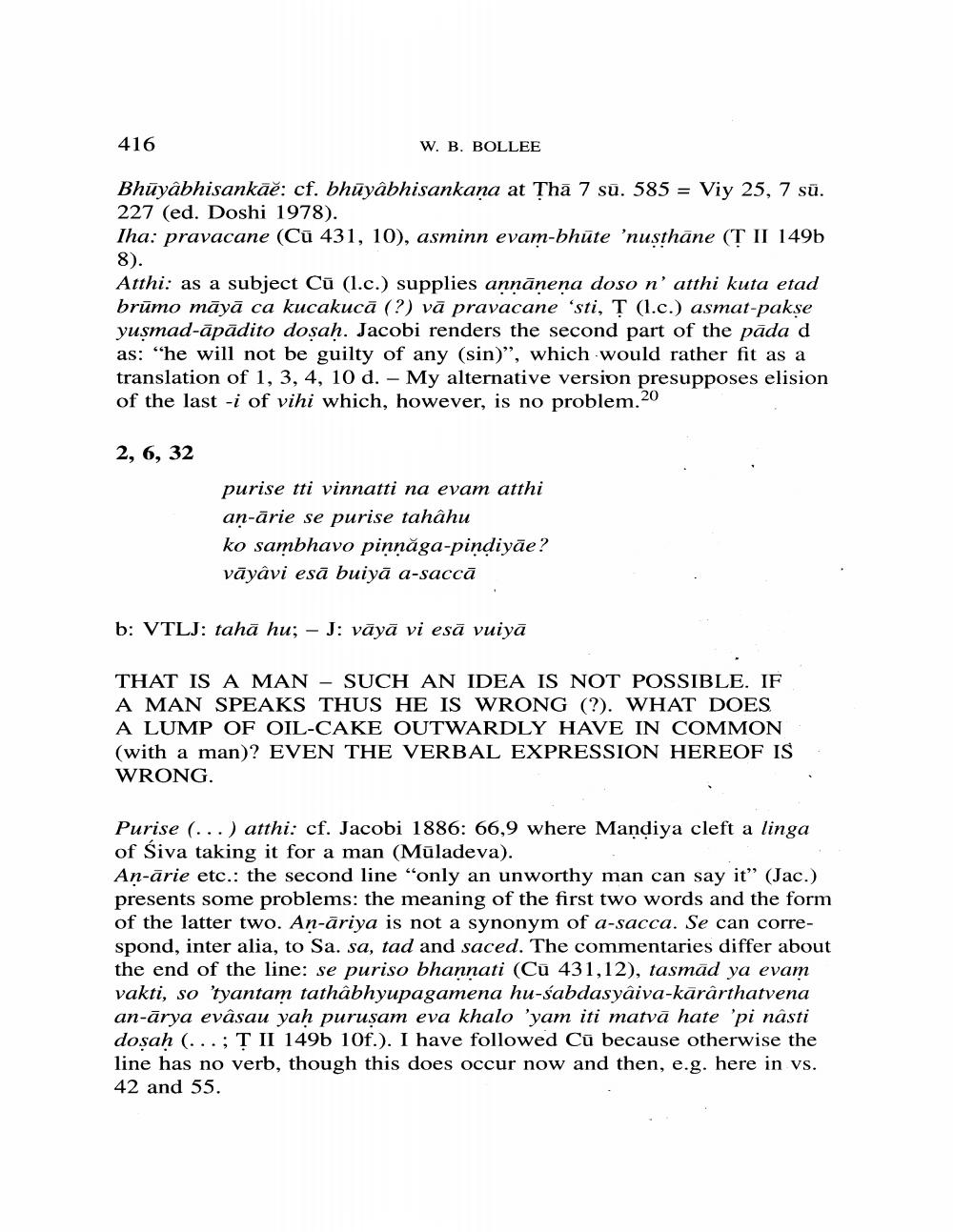Book Title: Adda Or Oldest Extant Dispute Between Jains And Heretics Author(s): W B Bollee Publisher: W B Bollee View full book textPage 6
________________ 416 W. B. BOLLEE Bhūyâbhisankāě: cf. bhūyâbhisankana at Thā 7 sū. 585 = Viy 25, 7 sū. 227 (ed. Doshi 1978). Iha: pravacane (Cū 431, 10), asminn evam-bhūte 'nusthāne (T II 149b 8). Atthi: as a subject Cū (1.c.) supplies annānena doso n'atthi kuta etad brūmo māyā ca kucakucā (?) vā pravacane 'sti, T (1.c.) asmat-pakse yuşmad-āpădito dosah. Jacobi renders the second part of the pāda d as: "he will not be guilty of any (sin)”, which would rather fit as a translation of 1, 3, 4, 10 d. - My alternative version presupposes elision of the last -i of vihi which, however, is no problem.20 2, 6, 32 purise tti vinnatti na evam atthi an-ārie se purise tahâhu ko sambhavo pinnåga-pindiyāe? vāyāvi esā buiyā a-saccā b: VTLJ: tahā hu; - J: vāyā vi esā vuiyā THAT IS A MAN - SUCH AN IDEA IS NOT POSSIBLE. IF A MAN SPEAKS THUS HE IS WRONG (?). WHAT DOES A LUMP OF OIL-CAKE OUTWARDLY HAVE IN COMMON (with a man)? EVEN THE VERBAL EXPRESSION HEREOF IS WRONG. Purise (...) atthi: cf. Jacobi 1886: 66,9 where Mandiya cleft a linga of Siva taking it for a man (Müladeva). An-ārie etc.: the second line "only an unworthy man can say it" (Jac.) presents some problems: the meaning of the first two words and the form of the latter two. An-āriya is not a synonym of a-sacca. Se can correspond, inter alia, to Sa. sa, tad and saced. The commentaries differ about the end of the line: se puriso bhannati (Cü 431,12), tasmad ya evam vakti, so 'tyantam tathābhyupagamena hu-sabdasyaiva-kararthatvena an-ārya evâsau yah puruşam eva khalo 'yam iti matvā hate 'pi nâsti dosah (...;T II 149b 10f.). I have followed Cū because otherwise the line has no verb, though this does occur now and then, e.g. here in vs. 42 and 55.Page Navigation
1 ... 4 5 6 7 8 9 10 11 12 13 14 15 16 17 18 19 20 21 22 23 24 25 26 27
